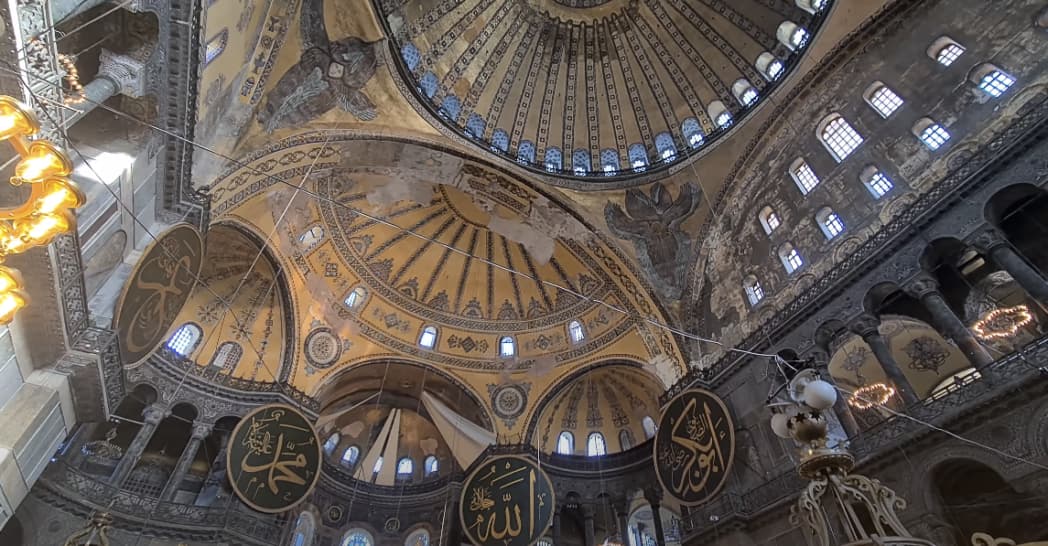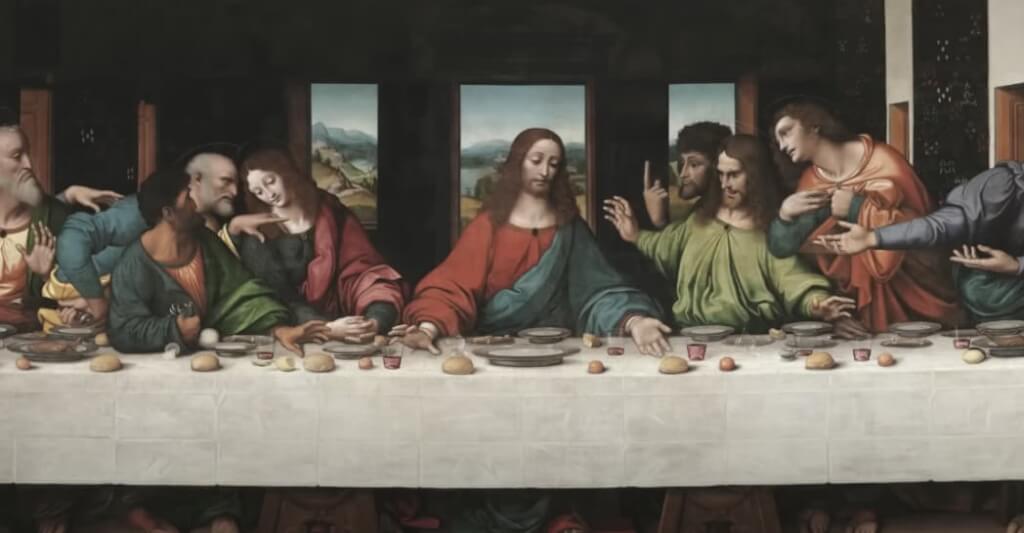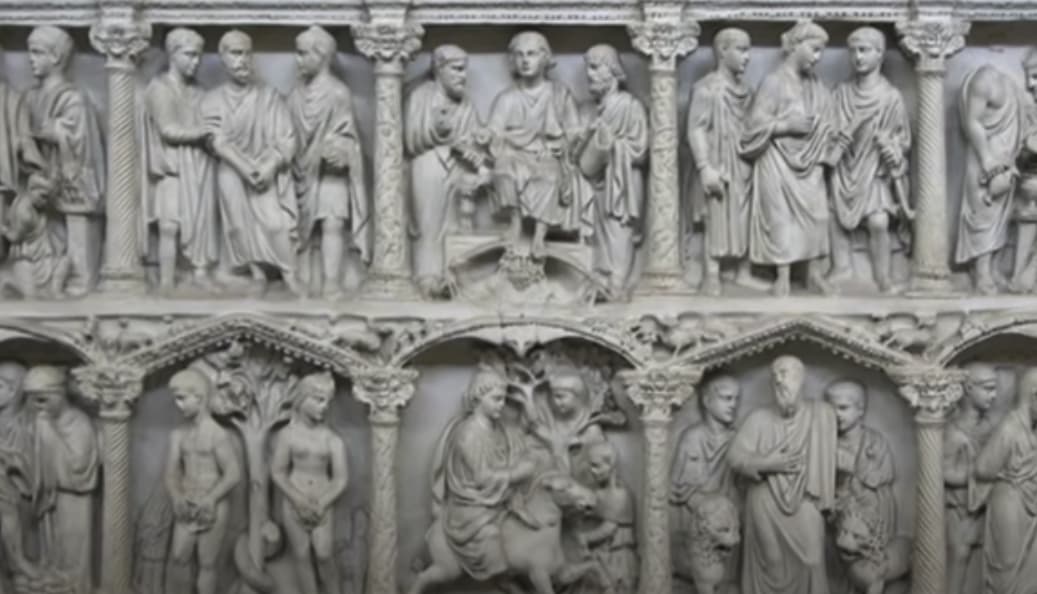Christian Art encompasses a wide array of mediums, from painting and sculpture to music, literature, and film. The unique blend of faith, spirituality, and creativity found in the works of Christian artists provides an inspiring interpretation of the Christian experience, as these artists use their art to express and explore their beliefs.
The Roots of Christian Art
Christian Art has a rich history that dates back to the earliest centuries of Christianity. The catacombs of Rome, filled with Christian symbolism such as the fish, the lamb, and the Good Shepherd, serve as testament to the beginnings of Christian Art.
Early Christian Art
Early Christian art encompasses a rich variety of artistic expressions that emerged during the early centuries of Christianity. It primarily revolves around the decoration of churches and catacombs with frescoes, mosaics, and sculptures. These artworks played a crucial role in conveying religious narratives and symbolizing the beliefs and values of early Christians. In this discussion, we will explore three notable examples of Early Christian art: the Good Shepherd Mosaic at the Mausoleum of Galla Placidia in Ravenna, Italy; the Catacomb Paintings in Rome; and the Sarcophagus of Junius Bassus.
- The Good Shepherd Mosaic at the Mausoleum of Galla Placidia, Ravenna, Italy: The Mausoleum of Galla Placidia, located in Ravenna, Italy, houses one of the most famous Early Christian mosaics, the Good Shepherd. This mosaic, dating back to the 5th century, depicts Christ as a youthful figure, dressed in a golden tunic and blue cloak. He stands in a verdant landscape, carrying a lamb on his shoulders, symbolizing his role as the caring shepherd who guides and protects his flock. The mosaic’s vibrant colors and intricate details highlight the influence of Byzantine art on Early Christian iconography;
- The Catacomb Paintings in Rome: The catacombs of Rome serve as a remarkable repository of Early Christian art, specifically in the form of frescoes. These underground burial sites were adorned with paintings depicting various biblical scenes, symbols, and portraits. The catacomb paintings not only served as decorations but also conveyed religious messages and provided solace to the early Christian community. They depicted scenes such as the miracles of Jesus, the resurrection, and the Good Shepherd, reflecting the central tenets of Christian faith;
- The Sarcophagus of Junius Bassus: The Sarcophagus of Junius Bassus is a noteworthy example of Early Christian sculpture. Carved from marble, this sarcophagus was created in the 4th century and was used to house the remains of Junius Bassus, a Roman official who converted to Christianity. The sarcophagus features a series of sculpted panels that depict scenes from the Old and New Testaments, including Adam and Eve, the sacrifice of Isaac, Christ’s entry into Jerusalem, and the arrest of Jesus. These intricate reliefs not only serve as representations of biblical narratives but also convey the Christian belief in the redemptive power of Christ’s sacrifice.
These examples of Early Christian art demonstrate the use of visual imagery to convey religious themes and ideas. They reflect the cultural and artistic influences of the time, as well as the evolving visual language of Christianity. These artworks continue to provide insights into the early development of Christian iconography and the profound impact of religion on artistic expression.
Byzantine Art

Byzantine art flourished in the Eastern Roman Empire, known as the Byzantine Empire, after the fall of the Western Roman Empire. It became a significant cradle of Christian art, characterized by its distinctive style and religious symbolism. Here, we will delve into three notable aspects of Byzantine art: the Hagia Sophia, icons, and the use of mosaics and frescoes in churches and monasteries.
- The Hagia Sophia: The Hagia Sophia, located in Constantinople (present-day Istanbul, Turkey), stands as an architectural marvel and an iconic masterpiece of Byzantine art and architecture. Built in the 6th century, this grand cathedral was later converted into a mosque and is now a museum. The Hagia Sophia exemplifies Byzantine architecture with its massive dome, intricate mosaics, and impressive use of light. The interior was adorned with mosaics depicting religious figures, imperial rulers, and biblical scenes, showcasing the Byzantine Empire’s wealth and religious devotion;
- Icons: Icons played a central role in Byzantine religious devotion and artistic expression. These religious images, typically painted on wooden panels, were venerated as sacred objects and believed to possess spiritual power. Icons portrayed Christ, the Virgin Mary, saints, and biblical events. They served as aids to worship, inspiring piety and meditation. During the period of Iconoclasm, which spanned the 8th and 9th centuries, the veneration of icons was fiercely debated. However, the use of icons eventually prevailed, and they continued to be an integral part of Byzantine religious life;
- Mosaics and Frescoes: Mosaics and frescoes were extensively used to decorate Byzantine churches and monasteries. Mosaics were created by arranging small, colored pieces of glass, stone, or other materials to form intricate images. They adorned the walls, domes, and apses of churches, portraying religious figures, events, and scenes from the Bible. Mosaics emphasized the divine and eternal nature of Christianity and conveyed theological messages to the faithful.
Frescoes, on the other hand, involved painting directly onto wet plaster, allowing the pigments to seep into the surface and become a permanent part of the wall. Byzantine frescoes depicted religious narratives and saints, often covering entire walls and ceilings. They served as visual aids for worship and education, enabling illiterate individuals to engage with religious stories and teachings. Frescoes were especially prevalent in monastic environments, where they adorned chapels, refectories, and other communal spaces.
The Renaissance: A Time of Artistic Revolution

The Renaissance era was a time of major transition in European Art, with many artists embracing humanism and naturalism. The influence of Christianity remained strong, with numerous works exploring biblical themes.
| Artist | Artwork | Significance |
|---|---|---|
| Leonardo Da Vinci | The Last Supper | Depicts Jesus’ last meal with his disciples. |
| Michelangelo | Sistine Chapel | Features biblical narratives, including the ‘Creation of Adam’. |
| Raphael | The School of Athens | Represents co-existence of faith and reason. |
Contemporary Christian Art

In contemporary art, Christian themes continue to be explored and reimagined. Artists use modern mediums and styles to communicate age-old messages of faith, redemption, and divine love.
| Artist | Art Form | Description |
|---|---|---|
| Makoto Fujimura | Abstract Art | Fujimura’s paintings utilize traditional Japanese Nihonga techniques while presenting abstract expressions of faith. |
| Edward Knippers | Vivid Sculptures | Knippers’ art portrays biblical characters in a style that combines modern aesthetics with profound spirituality. |
| Sadao Watanabe | Biblical Prints | Watanabe uses the traditional Japanese art of Katazome (stencil dyeing) to create biblically-themed prints |
Christian Art in Other Mediums: Music, Literature, and Film
Christian Art extends beyond visual representation and is equally prominent in music, literature, and film.
Music
Christian Music includes traditional hymns, gospel, Christian rock, and contemporary Christian music.
- Amy Grant: Known as “The Queen of Christian Pop”, she has used her music to share her faith and inspire listeners;
- Hillsong United: This Australian worship band has become globally recognized for their powerful songs of praise and worship.
Literature
Christian Literature spans several genres, from theological works to Christian-themed novels.
- C.S. Lewis: His works, including ‘The Chronicles of Narnia’ and ‘Mere Christianity’, have left a lasting impact on Christian literature;
- Max Lucado: A best-selling author, Lucado’s inspirational books have reached audiences worldwide.
Film
Christian films often explore themes of faith, morality, and the life of Jesus Christ.
- The Passion of the Christ: Directed by Mel Gibson, this film offers a vivid depiction of the last 12 hours of Jesus’ life;
- War Room: This film explores the power of prayer through a compelling narrative.
Conclusion
Christian Art stands as a testament to the enduring relationship between spirituality and creativity. Spanning various mediums and historical periods, it manifests the diverse ways artists interpret and express their faith. From early symbols in the catacombs of Rome, the grand mosaics of Byzantine art, to the masterpieces of the Renaissance and contemporary expressions, the journey of Christian Art mirrors the progression of Christian thought and spiritual exploration. Its enduring influence across music, literature, and film, further underscores the profound impact of Christianity on culture and creativity, making it a vibrant, evolving reflection of faith and devotion.
FAQs
Christian Art is defined by its themes and symbolism, which are inspired by the Christian faith. This can encompass anything from biblical narratives to abstract expressions of faith and spirituality.
Yes, the style of Christian Art has evolved significantly over centuries, reflecting broader trends in art and society. From the early symbolism seen in the Catacombs of Rome, to the grandeur of Byzantine Art, the realism of the Renaissance, and the diverse expressions of contemporary Christian Art, the styles have shifted, but the central theme of Christian faith remains consistent.
Christian Art plays a significant role in worship and devotion. It can serve as an aid to prayer, a medium for telling biblical stories, and a means of expressing personal faith.


No Responses